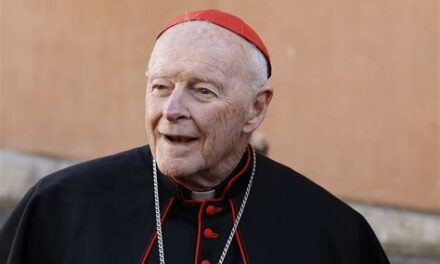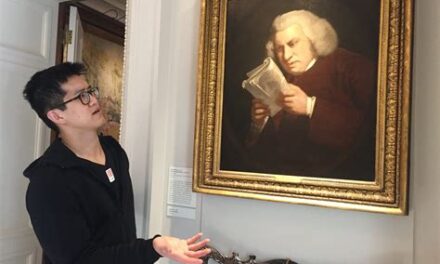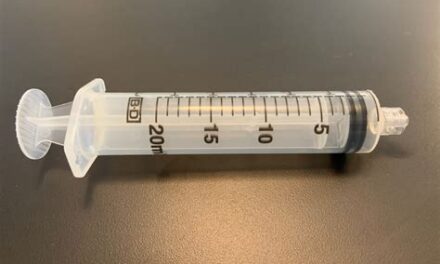Women’s dignity has often been unacknowledged and their prerogatives misrepresented; they have often been relegated to the margins of society and even reduced to servitude. This has prevented women from truly being themselves, and it has resulted in a spiritual impoverishment of humanity. St. John Paul II
The redacted Grand Jury report released on August 14, 2018, covers the occurrence and handling of sexual abuse cases in six Pennsylvania dioceses affecting over 1000 children.
Let that sink in – over 1000 children, who were fondled, groped, photographed in the nude and in sexual positions, and sexually assaulted.
These are our sons and daughters, grandchildren, nieces and nephews, the children we mothers and women of the Church baptized into a faith premised upon the precious value and dignity of every human being.
How could our leadership possibly have allowed and enabled sexual violations so contrary to the very heart of the teaching of the Church, so profoundly violent toward the particular interest of mothers and the protection of their young?
How could they have loosed upon the women and children of the Church a known group of male predators?
Any person of leadership in the Church, especially the bishops, who urge that the Grand Jury report should not cause alarm furthers the shame and disaster of this Episcopal crisis. It simply does not matter that this is “decades-old” activity and so much “progress” has been made since the implementation of the 2002 Charter for the Protection of Minors and Young People,
The Grand Jury report itself warns:
“What we can say, though, is that despite some institutional reform, individual leaders of the church have largely escaped public accountability. Priests were raping little boys and girls, and the men of God who were responsible for them not only did nothing; they hid it all. For decades. Monsignors, auxiliary bishops, bishops, archbishops, cardinals have mostly been protected; many, including some named in this report, have been promoted. Until that changes, we think it is too early to close the book on the Catholic Church sex scandal.” (p. 7) (Emphasis added)
It is in this context – while their own enabling of sexual abuse and abuse allegations against several Bishops were known – that the Bishops exempted themselves from the protections and mechanisms to prevent, detect, and address sexual abuse. This glaring exclusion – now euphemistically called a ‘mistake” by some Bishops – insured secrecy, non-transparency and non-accountability for themselves. It also enabled nearly two more decades of sexual abuse at the highest levels of the United States Catholic Church.
Proving the prescience of the report, we feel dizzy looking at revelations that, despite the promises of our leadership, a serial abuser served as the voice person for the 2002 Charter and attained the most august position of the U.S. Catholic Church. This was allowed to occur with full knowledge of every bishop!
We are now asked to believe statements denying any knowledge of McCarrick’s predatory behavior, such as those issued by Cardinals Farrell and Wuerl. Consider just how out of touch these “men of God” are with the women of the Church. With a few notable exceptions, our leadership has adopted the same strategies reported by the Pennsylvania Grand Jury as a strategy for self-protection — the use of euphemisms, assurances that clergy will solve the problem, non-disclosure of facts, non-accountability, and support for the offender. (See p. 3)
The Grand Jury report gives alarming insight into our leadership and how the “men of God” strategized in the face of the sexual crisis. The report provides a basic roadmap as to how the United States Conference of Bishops has and can be expected, to react to what Bishop Barron has called “the McCarrick Mess.” (Bishop Barron is one of the exceptions to the USCCB’s strategies listed above as self-protection).
Worse, the report demonstrates how the voice of women was systemically absent from critical decisions regarding the safety and protection of children. How can the Church leadership reach sound, healthy, and considered judgments about the safety and security of its children and young people while categorically excluding the voice of its women? As St. John Paul II wrote of his Theology of the Body in a 1995 Letter to Women:
The creation of woman is thus marked from the outset by the disposition to help: a help which is not one-sided but mutual. Woman complements man, just as man complements woman: men and women are complementary. Womanhood expresses the “human” as much as manhood does but in a different and complementary way.
Yet, critical decisions impacting the safety and well-being of the children of the Church were routinely made by a small male coterie which viewed alleged offenders, not in the interest of the women and children of the Church, but more from the vantage point of a male platoon defending against the scandal and shame which the enemy – the injured children and their mothers – might unleash upon their worthy enterprise.
The Pennsylvania Grand Jury report raises an urgent question for Church leadership. Has the failure of the Episcopacy to implement complementarity and the inclusion of women in critical decision-making resulted in a fraternity mentality that too readily objectifies women and children in favor of protecting one of its own? Put more directly, has the exclusion of women from critical decision-making in sexual abuse matters resulted in the chronic bad judgment by the Bishops?
These questions become more pressing given the Church’s subsequent history with lay involvement following the 2002 Charter, a period of “some institutional reform,” according to the Grand Jury report. An increase in proper reporting, removing alleged abusers from ministry and safeguarding the community is broadly acknowledged since the 2002 Charter reforms were put into place.
This fact is worth pause especially since a significant number of qualified laywomen were given voice through the mandated Diocesan Review Boards and the National Review Board. Indeed, most recently, three highly qualified laywomen were appointed to the National Review Board. It is not a stretch to conclude that women have played a critical role assisting their Bishops to improve the soundness of their decisions and the safety of the Church community.
In contrast, the report identifies approximately 54 individuals, including the Bishops, in leadership positions affecting the critical decision-making in each of the six dioceses under investigation. Of these 55 individuals, only two, Carol Houghton, Chancellor of the diocese of Harrisburg, and Rita Flaherty, were female. Houghton served as Chancellor but, as the detail of the report reflects, her role in abuse cases seems primarily administrative fact gathering. Houghton’s experience and involvement warrants recounting.
The material and the material Houghton did not gather — and never saw — was filed in the Bishop’s secret archive to which Houghton had no access. As the Grand Jury reported concerning Rev. Augustine Giella and a memo detailing abuse allegations against Giella, prepared by Monsignor Hugh Overbaugh:
Houghton was shown the 1987 Overbaugh memorandum and was questioned regarding the Diocese of Harrisburg’s failure to inform the family or law enforcement of its contents. Houghton testified she had never seen the 1987 Overbaugh memorandum concerning Giella. She had no prior knowledge that the Diocese of Harrisburg had warnings about Giella’ s behavior in 1987. Houghton did not have access to the secret archives; only the Bishop had access pursuant to the Canon Law of the Church. The Grand Jury observed this in numerous flawed Diocesan investigations across Pennsylvania. The Dioceses’ focus on secrecy often left even the Dioceses’ investigators in the dark. (p. 169)
Houghton’s input appears to have been further frustrated. In the case of Rev. Paul R. Fisher, the Grand Jury report noted:
“Chancellor Carol Houghton of the Diocese of Harrisburg testified before the Grand Jury on October 20, 2017. She stated she had a great concern about Fisher being placed back in ministry in 2011 when he admitted to viewing images of naked children. Houghton said she questioned [Bishop] McFadden about his decision. McFadden told her to forget it because nothing was found criminal on the laptop.” (p. 537)
Houghton persisted and In 2016 brought Fisher to Bishop McFadden’s successor Bishop Gainer’s attention.
Chancellor Houghton reviewed the clergy files in 2016 and remained concerned with how the Diocese handled the Fisher matter in 2011. She raised her concern to, and they approached Gainer, which resulted in the Diocese interviewing Fisher again in 2016. (p. 537)
Based on the follow up triggered by Houghton’s initiative, Fisher was removed from ministry. The Grand Jury report reflects that Fisher’s case remains pending with the Congregation of the Doctrine of Faith.
With the sole exception and limited role of Chancellor Carol Houghton, the Grand Jury identified 53 male clergy as the individuals responsible for the strategy which 1) allowed sexually abusive priests to remain in and return to ministry and 2) hide from government authority and the laity the abuse history of priests in ministry. Without information, without input into the handling of abusers, without awareness of the Episcopal disregard for the concerns of the women of the Church, mothers and all women did not know to protect and safeguard their children from sexual abuse at the hands of clergy.
Women will not make this mistake again.
Many have left the Church and taken their families to safer, more transparent environments, environments that welcome the voice of women at all levels. We who have stayed are wearied beyond measure and failing, appreciative as we are for the difficult service women have rendered the Church since 2002 on Diocesan and National Review Boards.
Their service, like the many lay and religious women staffing the Church’s diocesan offices and social service programs, occurs in a disturbing vacuum of attention to teachings which touch and shape the lives of women and children. As the expert scholar, Pia de Solenni recently commented, “[T]he June revelations of the credible allegations of sex abuse on the part of Cardinal Theodore McCarrick confirm what many have suspected for a long time. The Church has been uncomfortably silent on matters of sexuality, family, and marriage because some in her leadership do not live these teachings themselves. And it is very hard to teach something that one does not know and live.”
Many women have experienced a general refusal in the Episcopacy to embrace and promulgate the teachings of Humanae Vitae, a profoundly pro-woman, pro-life Encyclical that celebrated its 50th anniversary in relative obscurity. Esteemed seminary professor Janet Smith observed on the occasion of the Encyclical’s anniversary, “Over the last 50 years those priests and laity who have tried to promote Humanae vitae and to teach methods of Natural Family Planning have regularly been astonished and demoralized by how little support they have received from bishops.”
The exclusion of women’s voices and concerns is costly to the Church. As the Director of the Catholic Women’s Forum Mary Rice Hasson summarized:
“Men and women look at people and particular problems through different lenses — which shapes decisions about questions to ask, data to collect and how to interpret results. Communication styles differ, as well. Sexual difference is real, but men and women are complementary. We need each other, and the Church needs our collaboration to amplify the good news of Humanae Vitae.”
Similarly, many of us have watched with dismay Bishops socializing with and honoring “Catholic pro-choice” politicians, the darlings of the abortion industry. We have tried – and failed – to enlist Episcopal support on issues critical to the New Feminism called for by St. John Paul II, issues of fidelity in marriage, the permanence of marriage, natural family planning, pro-life programming, and education.
We have raised genuine concern and reasonable questions over the increase of same-sex attracted men within the clergy, men who may succumb to sexual temptations in the all-male environment of seminaries and men who might feel sympathy for same-sex “marriage” and “family building” technologies that commercialize the reproduction of children and further objectify the female body.
For some of us, the worry now is whether there is a place for lay women in the United States Catholic Church. Is the Pennsylvania Grand Jury report our last straw?
The Grand Jury report reveals an Episcopal body desperately in need of its women. But the bishops are seemingly more desperate to hide, conceal and obfuscate its own sins.
The looming question remains: Will the USCCB establish diocesan and national lay boards – with significant female membership – to hold accountable the Church leadership responsible for enabling McCarrick’s abuse and Episcopal ascendancy?















Treat as best as possible
A system of checks and balances!
What about investigating convent?
Yes, when the McCarrick abuse story initially came out, I also thought the investigation of convents would be a good idea!!!